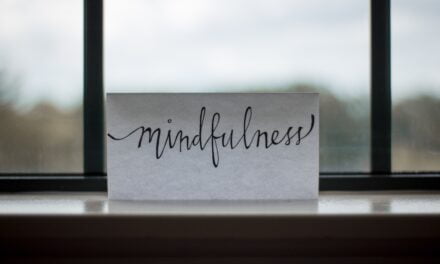As the world buzzes with activity, it’s easy to become entangled in the web of anxiety. But what if you could gently untangle those threads with the power of mindfulness? Mindfulness and meditation are not just buzzwords; they are practices that have been shown to have a profound impact on mental health, particularly in managing anxiety. In this listicle, we’ll explore five effective mindfulness techniques that can help you overcome anxiety and foster a sense of peace and well-being, alongside some helpful products that can assist you on your journey.
1. Mindful Breathing
When anxiety strikes, our breath becomes shallow and rapid. Mindful breathing is a simple yet powerful technique to regain control of your breath and, by extension, your anxiety. Here’s how to practice it:
- Find a quiet space and sit comfortably.
- Close your eyes and take a deep breath in through your nose, counting to four.
- Hold your breath for a count of four.
- Exhale slowly through your mouth for a count of four.
- Pause for a count of four before taking another breath.
- Repeat this cycle for a few minutes.
By focusing on your breath, you can anchor your mind in the present moment and reduce the racing thoughts associated with anxiety. To enhance your practice, consider using the Mindsight ‘Breathing Buddha’ Guided Visual Meditation Tool, which can help guide your breathing and calm your mind.
2. Body Scan Meditation
Body scan meditation is a technique that promotes awareness of the body and helps release physical tension that often accompanies anxiety. To practice a body scan:
- Lie down or sit in a comfortable position.
- Close your eyes and take a few deep breaths to relax.
- Focus your attention on your toes and notice any sensations.
- Gradually move your awareness up through each part of your body, from your feet to the crown of your head.
- As you notice tension, breathe into that area and imagine it melting away.
This mindful journey through your body can help you feel more grounded and relaxed. For a tactile aid, the Mindsight ‘Peaceful Pebble’ Guided Visual Meditation Tool can be a perfect companion for your body scan sessions.
3. Guided Imagery
Guided imagery is a technique that involves visualizing a peaceful scene to calm the mind. It can transport you away from the stressors of life and into a serene environment. Here’s how to practice guided imagery:
- Find a comfortable position and close your eyes.
- Listen to a guided imagery recording or visualize a place that makes you feel happy and relaxed.
- Engage all your senses in this visualization—notice the sights, sounds, smells, and sensations of your peaceful place.
- Allow yourself to be fully immersed in this experience for several minutes.
Guided imagery can provide a mental escape and reduce anxiety by shifting your focus to calming thoughts. The Morphée Zen – Relaxing Meditation Audio Pebble offers various relaxation sessions and nature sounds that can enhance your guided imagery practice.
4. Mindfulness Walking
Combining physical activity with mindfulness, walking meditation is a great way to connect with your surroundings while calming the mind. To practice mindfulness walking:
- Choose a quiet place to walk, whether it’s a park or a peaceful street.
- As you walk, pay attention to the sensation of your feet touching the ground.
- Notice the rhythm of your steps, the movement of your body, and the sights and sounds around you.
- If your mind wanders, gently bring your focus back to the act of walking.
This practice not only helps with anxiety but also increases your physical well-being. For those interested in deepening their walking meditation, the The Headspace Guide to… Mindfulness & Meditation book, as seen on Netflix, can offer valuable insights and techniques.
5. Loving-Kindness Meditation
Loving-kindness meditation fosters a sense of compassion towards oneself and others, which can be especially soothing when dealing with anxiety. To practice loving-kindness meditation:
- Sit in a comfortable position and close your eyes.
- Begin by directing warm, compassionate thoughts towards yourself.
- Repeat affirmations like ‘May I be happy, may I be safe, may I be healthy, may I live with ease.’
- Gradually extend these wishes to loved ones, acquaintances, and even those you may have difficulty with.
This meditation can help dissolve feelings of isolation that often accompany anxiety and promote a sense of connectedness. To assist you on this path, the Meditation Sidekick Journal can serve as a helpful guide and gratitude journal.
Conclusion
Incorporating these mindfulness techniques into your daily routine can be a transformative practice for managing anxiety. Remember, the key to mindfulness is consistency and patience. As you continue to practice, you may find yourself becoming more resilient to the ebbs and flows of anxiety. Embrace these moments of peace, and let them guide you towards a more serene state of mind.
Key Takeaways:
- Mindful breathing can help stabilize your emotions during anxious moments.
- Body scan meditation releases physical tension and promotes relaxation.
- Guided imagery provides a mental sanctuary from stress.
- Mindfulness walking combines the benefits of meditation with gentle exercise.
- Loving-kindness meditation enhances feelings of compassion and reduces isolation.









